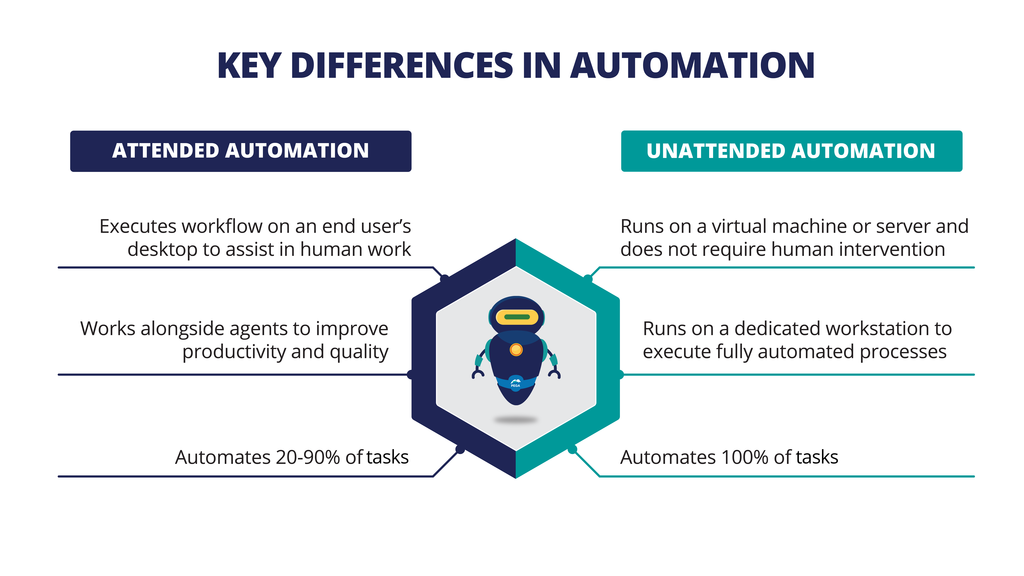
Pega Robotic Automation architecture
Pega Robotic Automation provides two modes of automation: attended and unattended. Attended automation is an automation solution that assists an agent in handling simple, repetitive tasks. Unattended automation is an automation solution that fully automates specific case types from Pega Platform™ applications and automated business tasks.
Automation development
A robotic solutions developer requires either a stand-alone or a plug-in instance, depending on whether Microsoft Visual Studio is installed in the developer's environment.
Pega Robotic Automation™ installs Pega Robot Studio™, the Microsoft Visual Studio shell as required, and other necessary system requirements to develop a Pega Robotic Automation solution, test it, and package it for deployment.
Alternatively, if Microsoft Visual Studio is already installed on the developer's machine, the plug-in can be installed with the existing license of Microsoft Visual Studio. This step validates the version of Microsoft Visual Studio with the Pega Robot Studio Plug In version.
In development environments, Pega Robot Runtime™ installs automatically to allow the developer the ability to test and debug the robotic automation solution locally before any deployment packaging.
The developer's desktop requires access to all the necessary applications used in the robotic solution to test and debug the robotic solution before deployment.
Deployment strategy
Deployment strategy is a process to deliver a packaged robotic solution from Pega Robot Studio to a machine desktop. The preferred deployment strategy for robotic solutions is Pega Robot Manager™.
Pega Robot Manager is a web-based control management product that provides access to deliver robotic solutions to end users and robots. Pega Robot Manager provides a dashboard to monitor robots to prioritize, reroute, and schedule work when necessary.
Runtime Automation desktop
A runtime desktop executes a deployed robotic automation on an end user or robot machine. A runtime desktop must have Pega Robot Runtime installed and configured as well as access to all applications references in the robotic solution.
The runtime desktop has the same Pega Robot Runtime and application requirements for both unattended and attended implementations.
This Topic is available in the following Module:
If you are having problems with your training, please review the Pega Academy Support FAQs.
Want to help us improve this content?
